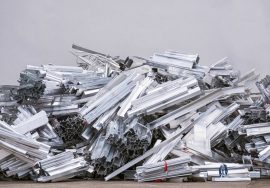The Role of Heavy Machinery in Modern Construction

Heavy machinery plays a critical role in modern construction, making it possible to complete projects efficiently, safely, and within budget. From skyscrapers to roadways, the use of advanced machinery has revolutionized how construction is carried out, speeding up timelines, improving precision, and reducing manual labor. In this blog, we will explore the role of heavy machinery in construction and how it contributes to the success of modern projects.
Enhancing Efficiency
One of the primary benefits of heavy machinery in construction is its ability to enhance efficiency. Tasks that once took days or weeks can now be completed in a fraction of the time with the help of modern equipment. This not only saves time but also significantly reduces the labor costs associated with manual processes.
Key Machinery for Efficiency:
- Excavators: Used for digging, demolition, and moving large amounts of earth.
- Cranes: Essential for lifting and placing heavy materials at heights.
- Bulldozers: Used for grading, clearing land, and pushing materials.
By utilizing heavy machinery, construction companies can keep projects on schedule and meet deadlines more easily, leading to increased client satisfaction and more streamlined operations.
Improving Safety
Safety is a top priority in construction, and heavy machinery has greatly contributed to improving safety standards on job sites. By automating dangerous tasks, machines reduce the need for workers to perform hazardous activities manually, lowering the risk of injury. Additionally, modern equipment often comes with built-in safety features such as sensors, alarms, and automatic shutdown systems that protect both operators and nearby workers.
Safety Benefits of Heavy Machinery:
- Reduced manual labor: Heavy equipment takes on the most physically demanding tasks, reducing the risk of injury for workers.
- Advanced safety features: Many machines are equipped with safety technologies that alert operators to potential hazards.
- Training programs: Proper training in the use of heavy machinery further improves safety by ensuring operators are knowledgeable about the equipment’s functionality and risks.
By utilizing heavy machinery properly and following safety protocols, construction sites can significantly reduce accidents and ensure a safer working environment.
Precision and Accuracy
In construction, precision is crucial. Heavy machinery, such as graders, pavers, and laser-guided equipment, allows for a level of accuracy that is difficult to achieve through manual labor alone. For example, bulldozers equipped with GPS technology can grade land to exact specifications, ensuring that foundations are level and ready for building. Similarly, cranes and excavators are capable of placing materials with incredible precision, minimizing the risk of mistakes and the need for costly rework.
Machines for Precision:
- Graders: Used for fine grading and leveling surfaces.
- Pile drivers: Precision in driving piles ensures stability for structures.
- Laser-guided pavers: These help in achieving accurate surface levels for roads and pavements.
The use of precision-based machinery not only improves the quality of the finished project but also reduces waste and material costs.
Versatility of Heavy Machinery
Modern construction requires machinery that is versatile and capable of handling a wide range of tasks. Many types of heavy equipment are designed to perform multiple functions, making them valuable assets on any construction site. For instance, backhoes can be used for both digging and loading, while telehandlers can lift materials and also serve as mobile platforms for workers.

Versatile Machines:
- Backhoes: These machines combine the functions of an excavator and a loader, making them highly adaptable.
- Skid-steer loaders: Compact and versatile, skid-steers can be fitted with various attachments for different tasks.
- Telehandlers: Telehandlers can lift materials to great heights and provide support in placing heavy objects in specific areas.
The versatility of heavy machinery allows construction companies to invest in fewer machines while still meeting the demands of the job, ultimately saving on costs.
Environmental Impact
While heavy machinery has traditionally been associated with high fuel consumption and emissions, modern advancements have led to the development of more environmentally friendly equipment. Many manufacturers now produce electric and hybrid machinery that reduces the carbon footprint of construction projects. Additionally, more efficient machinery designs help minimize energy use and reduce waste on-site, aligning with the growing emphasis on sustainability in the construction industry.
Green Machinery:
- Electric excavators: These reduce emissions and operate more quietly compared to traditional models.
- Hybrid bulldozers: Hybrid models use less fuel while maintaining high performance.
- Energy-efficient cranes: Modern cranes are designed to use less power, reducing their environmental impact.
The construction industry is increasingly embracing sustainable practices, and the use of eco-friendly heavy machinery is a key component in reducing the overall environmental impact of construction projects.
Conclusion
Heavy machinery is essential in modern construction, contributing to greater efficiency, improved safety, and precise execution of tasks. The versatility of these machines allows them to handle multiple functions, reducing labor costs and time, while modern advancements in eco-friendly technology help reduce the environmental footprint of construction activities. As the industry continues to evolve, heavy machinery will remain at the forefront of innovation, shaping the future of how construction projects are carried out.
Meta Description: Learn how heavy machinery plays a vital role in modern construction, enhancing efficiency, safety, precision, and sustainability on construction sites.
Internal Link: For more information on how to incorporate heavy machinery in your construction project, contact us.
External Links:
- Discover the latest construction machinery trends.
- Explore the environmental benefits of hybrid heavy equipment.
Read more related articles to enhance your knowledge and make informed decisions
10 Essential Steps in the Building Construction Process
How to Choose the Right Materials for Your Construction Project








